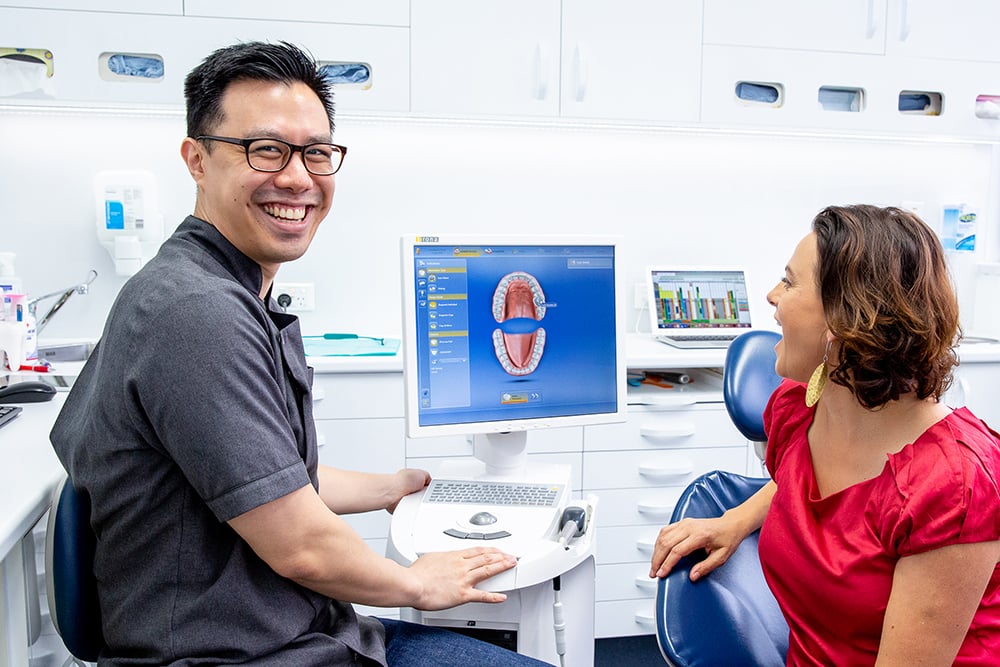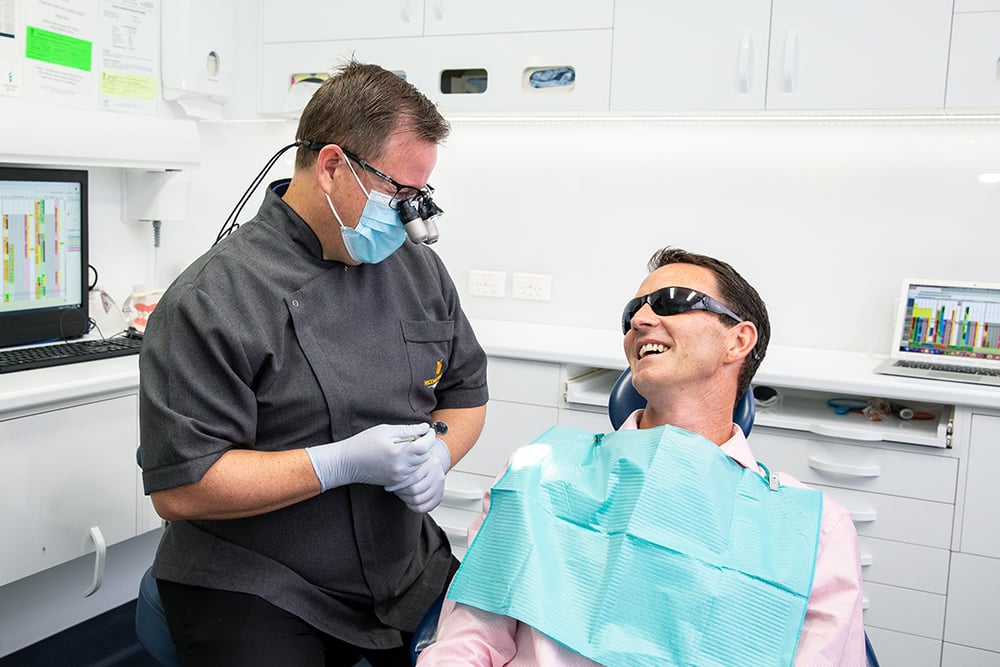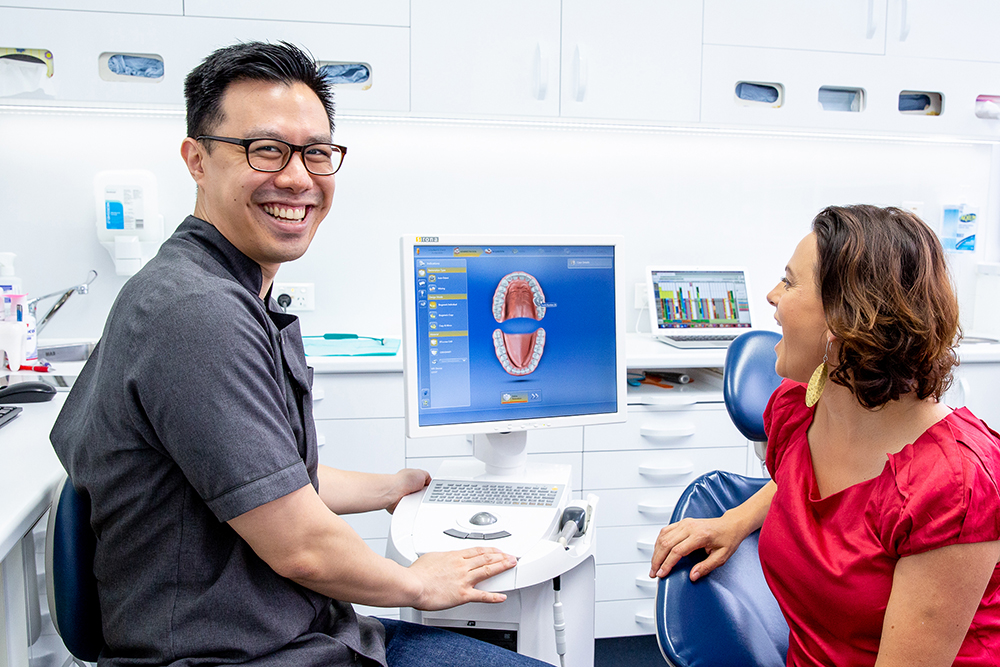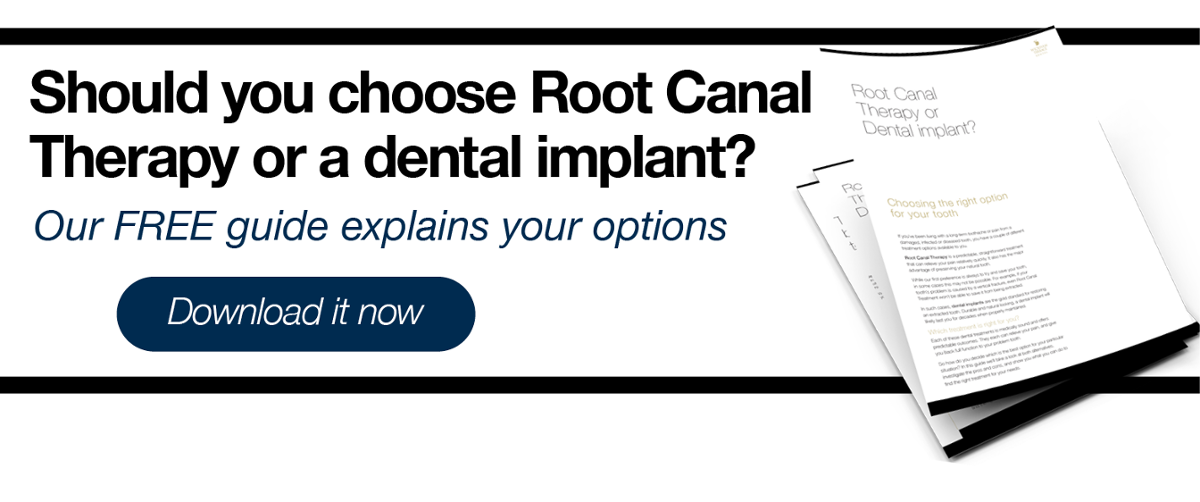Can a bone graft be the way for me to get a dental implant?
How bone grafting can aid success when replacing a tooth
If you’ve been living with a missing tooth, chances are you’ve considered replacing your tooth with a modern titanium dental implant. It’s a really simple and proven device, yet it needs a good foundation – which means you must have sufficient jaw bone to securely hold your implant.
That’s why up to half of people who benefit from a dental implant need a bone graft before their procedure. Today’s modern materials and techniques make bone grafting and implant success more predictable than ever before. But what exactly is a bone graft, and when might you need it?

Why might you have insufficient bone for a dental implant?
The best time to place an implant is 2-6 months after you’ve had your tooth removed. That’s because, if your tooth was removed longer than 6 months ago, your bone may have started to deteriorate.
If you lost your tooth more than 12 months ago, you may not have sufficient bone volume left to securely hold a dental implant. What’s more, if you there isn’t enough bone, there won’t be enough gum either. This can easily affect the long term success of your dental implant – and can also cause hygiene issues.
Since any recession of your gums can expose the implant base, or alter the symmetry and natural appearance of the tooth, it doesn’t make for a very aesthetic tooth replacement either.
You may also be naturally fine boned, with insufficient jaw bone present. Or if you have had a longstanding infection or trauma, this may have caused your jaw bone to wear away.
In all of these cases, you may first need a bone graft before your dentist can successfully place a dental implant.
How do bone grafts work?
In most cases, with a bone graft we place a collection of bone granules under your gum. This creates a 3D “scaffold” which allows your natural bone cells to infiltrate and use this material as a building block for natural bone to grow.
At Wickham Terrace Dental we can also concentrate factors from your blood to add to the graft. This procedure provides a lot of signals to your body that it needs to create active bone growing cells. We then place a membrane over the top of the graft to protect and reseal the gum. Your body then works its magic to repair your bone!
Is a bone graft suitable for everyone who’s missing a tooth?
Unfortunately, because of their underlying conditions, some people are not candidates for a bone graft before dental implant placement.
For example, if you are undergoing treatment for osteoporosis, this will be inhibiting your bone metabolism, which makes you an unsuitable candidate for bone grafts. Similarly, if you are a diabetic but you aren’t under controlled management, you’ll likely have issues with blood vessel growth, making you very weak vascularly. Bone grafting will not be an option for you.

The number one group who are not able to take advantage of bone grafts are smokers. This is because toxins in the smoke will inhibit bone formation and blood vessel growth. Those who are undergoing cancer treatment are also unfortunately not suitable for a bone graft procedure.
If you have an uncontrolled infection of your teeth or gums, this must be addressed before you can progress to a bone graft procedure. And in some rare cases, you may have so little bone left (perhaps because you’ve been wearing dentures for many decades), that there isn’t enough to facilitate the growth process.
Other people may uncontrollably clench or grind their teeth at night (known as bruxism), in which case bone grafting and dental implant placement can be difficult to achieve successfully.
Find out whether bone grafting could suit you
If you’re not sure whether you could be a candidate for bone grafting, please contact the friendly Wickham Terrace Dental team to discuss your situation. Get in touch with our Brisbane dentists on (07) 3831 3031 or contact us online now.
![Wickham-logo_[RVSE]-HORIZ-024_NEW_BP-web](https://latestnews.wickhamterracedental.com.au/hubfs/Wickham-logo_%5BRVSE%5D-HORIZ-024_NEW_BP-web.png)



